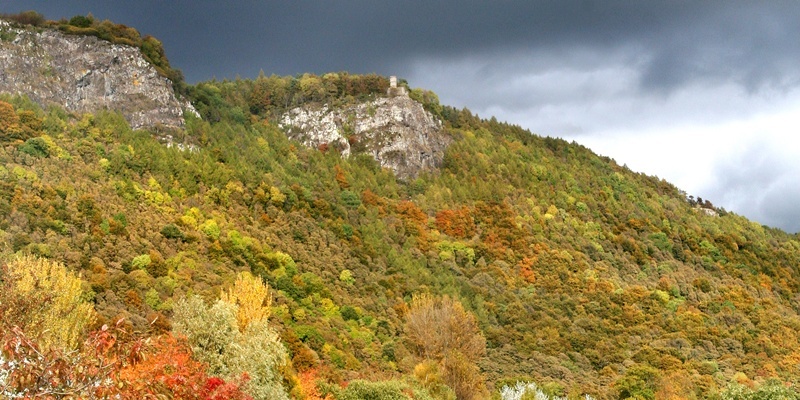Around 46,000 homes will have to be built across Tayside and north Fife over 20 years to cope with a rising population, a major new report has said.
It also calls for the “vast majority” of new housing and economic development in the region to be located in Dundee and Perth and for public transport to be improved, minimising the pressure on smaller towns and rural areas.
The proposals, covering 2012 to 2032, have been drawn up by TAYplan, the strategic development planning authority, and are now out for public consultation before a finalised plan is submitted to the Scottish Government for approval.
TAYplan chairman and Dundee councillor Will Dawson said the aim of the plan was to “provide an environment for this region to continue to be a natural choice for investment and a place where more people will wish to live, work and visit.”
One of the key factors to be taken into account is population.
Dundee has been losing residents for many years, although the rate of decline has been slowing, while Perth and Kinross has seen its popularity growing rapidly.
The report calls for the former trend to be reversed while acknowledging the latter is set to continue.
At present around 475,000 people live in Tayside and north Fife.
By 2032 this could rise to 515,000, with the population of Perth and Kinross jumping by 16% to over 170,000, Dundee growing by more than 5% to 147,000 and Angus and north Fife seeing smaller rises.
The report said, “This is considered a desirable and realistic option.
“The approach is about recognising that stabilising and reversing population decline in Dundee requires fewer people leaving and more people choosing to live and work there.
“Already the emerging growth sectors of the economy offer some opportunity for this.
“However, the challenge will be to improve the quality of homes and neighbourhoods through regeneration and new development.”
Housebuilding in the city would have to average over 600 homes per year for the life of the plan to accommodate the projected population increase and the trend towards smaller households.2300 homes a yearHowever there would be even greater development needed in Perth and Kinross, probably between 900 and 1000 new homes per year, and the annual average across the whole region would be around 2300.
Sites for around 15,000 houses have either been granted planning permission or been allocated in existing development plans.
That means suitable land for another 31,000 homes will have to be identified.
Many will need to be family-sized homes especially in Dundee which relies too heavily on flats or houses suitable for the needs of an ageing population.
TAYplan considered whether greater housing and economic development in the Carse of Gowrie would be desirable but decided it would not, partly on environmental grounds.
Development pressures would also “be directed away” from St Andrews.
The report said, “Development in existing settlements and regeneration offer some of the best opportunities to reduce our impact on the natural environment and improve the quality of place and quality of life for people.
“The location, design and layout of new development will need to improve accessibility and reduce travel demand, pollution, resource consumption and our contribution to climate change.”
Dundee and Perth are recognised as “the drivers of the local economy” and concentrating development in them makes use of existing and proposed infrastructure and offers homes, jobs and services in close proximity.
The total value of the region’s economy is estimated at around £7 billion per year, although the report noted Dundee suffered one of the highest unemployment rates of any Scottish local authority.
Potential growth areas include life sciences and digital media in Dundee, finance in Perth and retail in both.
Further development of Dundee and Montrose harbours, partly to take advantage of the offshore renewable energy sector, is also recommended.
The report also calls for more efforts to promote tourism which employs 16,000 people and assist rural communities by commercialising the work of the Scottish Crop Research Institute at Invergowrie and promoting the food industry.
It said, “The small-scale fishing fleets around Arbroath, Anstruther and Pittenweem and the local game, venison and smoked meats industry have an important role in shaping the image of the region as a quality brand for tourism, contributing to wider economic regeneration and reducing food mileage.”
On infrastructure development, the report backs the idea of a new bridge over the Tay in Perth, although it is non-committal at this stage about whether the A90 in Dundee should be upgraded along its existing route or if there should be a city bypass.
TAYplan has also been considering a separate environmental report which shows some of the risks of future development and suggests how to mitigate them.
Biodiversity could be harmed by inappropriate or poorly-sited development, soil and water could be polluted and hotspots in Dundee, Perth and Cupar could suffer from higher levels of vehicle emissions.
On the other hand the use of wildlife corridors, efforts to minimise waste production and the careful siting of developments to safeguard vulnerable areas and protect the character of the landscape could all be helpful.
The report noted that the projected increase in houses in the region would, assuming a density of 25 homes per hectare, require 17 sq km of land.
The existing developed area is 275 sq km.
It added, “Our overall conclusions are that the effects are largely uncertain as they will depend on how the plan is taken forward and implemented by lower-level plans and policies.”
Details of the report can be found online at www.tayplan-sdpa.gov.uk.
A series of public information events will be held by TAYplan next month and June.
